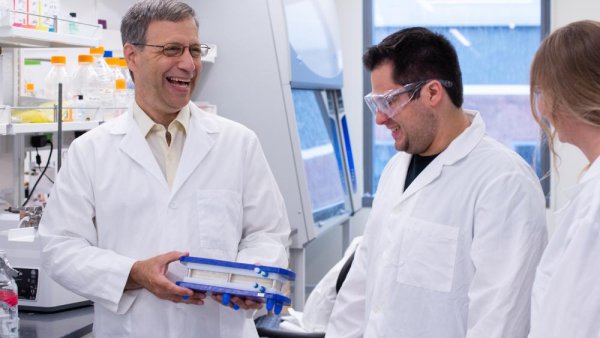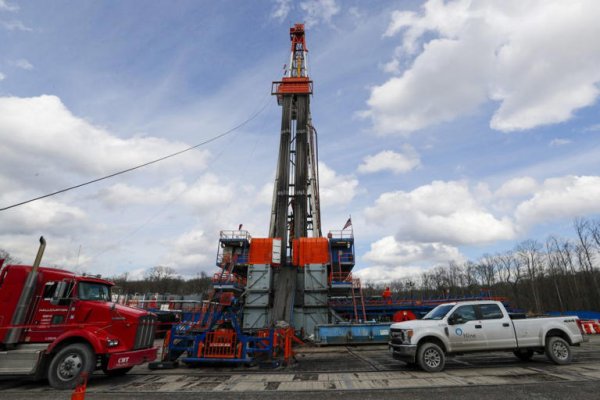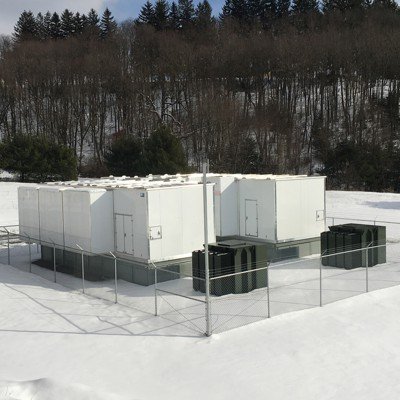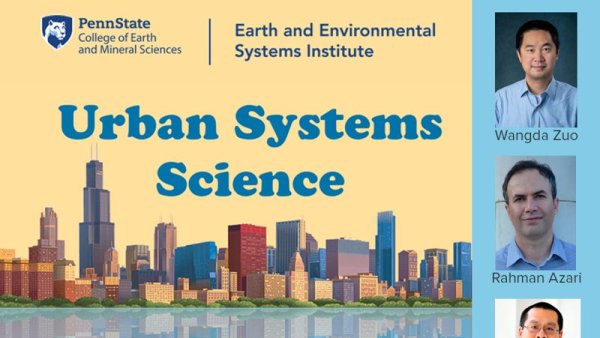IEE faculty, staff, and projects in the news
'Growing Impact' examines PFAS water contamination, evaluation of existing tech
| psu.edu
The latest episode of the "Growing Impact" podcast examines the challenges and potential negative health outcomes of PFAS in drinking water, highlighting efforts to evaluate decontamination technologies for safer community water sources.
Mentions
-
Heather Preisendanz
-
Juliana Vasco-Correa
-
Faith Kibuye
-
Enrique Gomez
-
Stephanie Butler Velegol
Acting Associate Department Head and Teaching Professor, Chemical Engineering
Preisendanz to direct Penn State College of Agricultural Sciences institute
| psu.edu
Heather Preisendanz, associate professor of agricultural and biological engineering in Penn State’s College of Agricultural Sciences, has been named director of the Institute for Sustainable Agricultural, Food, and Environmental Science.
Mentions
-
Heather Preisendanz
-
Blair Siegfried
Associate Dean for Research and Graduate Education, College of Agricultural Sciences
Membrane research moves forward with additional five years of NSF funding
| psu.edu
The Membrane Applications, Science and Technology Center, an industry-university cooperative research center supported by the U.S. National Science Foundation and co-led by Penn State, recently received five additional years of funding. The funding will allow for an expansion of the center at Penn State, which has served as one of four of the center’s partner academic institutions since 2019.
Mentions
Growing Impact: Low-cost PFAS filtration
For decades, PFAS (per- and polyfluoroalkyl substances) have been a staple in products from detergents to cosmetics, making items more durable and resistant to water and stains. However, these "forever chemicals" persist in the environment and are now ubiquitous, even in our drinking water. Emerging evidence links PFAS exposure to significant health risks, prompting a team of researchers to evaluate affordable filtration technology, especially in communities reliant on well water.
New demands to measure emissions raise cautious hopes in Pennsylvania among environmental sleuths who monitor fracking sites
| msn.com
For the first time, Pennsylvania fracking companies are facing real-time scrutiny from federal and state regulators over emissions of methane and other harmful air pollutants at drilling sites and storage facilities for toxic wastewater left over from oil and gas extractions. This article quotes Dave Yoxtheimer, Senior Research Assistant, Earth and Environmental Systems Institute, and Kenneth Davis, a professor of climate and atmospheric science.
Mentions
Microgrids bringing maximum impact to PA’s energy landscape
| cityandstatepa.com
Localized distributed energy systems are helping protect Pennsylvanians against power outages and high energy costs. This story quotes Jim Freihaut, a professor of architectural engineering.
Mentions
2024 Sustainability Expo to be held April 6 at Shaver's Creek
| psu.edu
The 2024 Sustainability Expo will be held Saturday, April 6, from 11 a.m. to 4 p.m. at Shaver’s Creek Environmental Center.
Mentions
Carbon sequestration and mineralization
Addressing the incontrovertible risks of climate change requires deep decarbonization. In addition to green measures like upscaling renewables and improving energy efficiency, there is broad scientific consensus that large-scale carbon capture and sequestration (CCS) remains critical to limiting global temperature rise below 2°C.
Stable profits, land preservation matter to farmers debating solar leases
| bradfordera.com
To solar or not to solar? While a stable and predictable profit is an important factor to Pennsylvania farmers considering leasing out their land for solar energy development, it’s not enough on its own, according to new research led by Penn State.
Mentions
-
Kaitlyn Spangler
-
Erica Smithwick
-
Stephanie Buechler
-
Jennifer Baka
Associate Professor and John T. Ryan, Jr. Faculty Fellow, College of Earth & Mineral Sciences
When planting trees is bad for the planet
| popsci.com
An area of ecologically intact and biodiverse grassland larger than France is endangered by an NGO-fueled push to plant as many trees as possible. Originally published by Popular Science, this article quotes Ida Djenontin, assistant professor of geography and IEE faculty member.
Mentions
Feb. 19 EarthTalks: Carbon emissions trading, incentives in building retrofits
| psu.edu
Wangda Zuo, Rahman Azari and Jiazhen Ling will give the talk, “The Economic Impacts of Carbon Emission Trading Scheme on Building Retrofits,” at 4 p.m. on Monday, Feb. 19 in 112 Walker Building on the University Park campus.
Mentions
-
Wangda Zuo
-
Rahman Azari
-
Jiazhen Ling
 Jiazhen Ling
Jiazhen Ling
How a legal loophole allows gas leaks to keep on flowing
| e360.yale.edu
A new federal rule will cut major methane emissions from natural gas production. But residents of Pennsylvania’s fracking region contend that the cumulative impact of smaller leaks, which go unreported, will continue unabated, compromising their air, water, and health. This article quotes Jennifer Baka, associate professor of geography and IEE faculty member.
Mentions
-
Jennifer Baka
Associate Professor and John T. Ryan, Jr. Faculty Fellow, College of Earth & Mineral Sciences


































